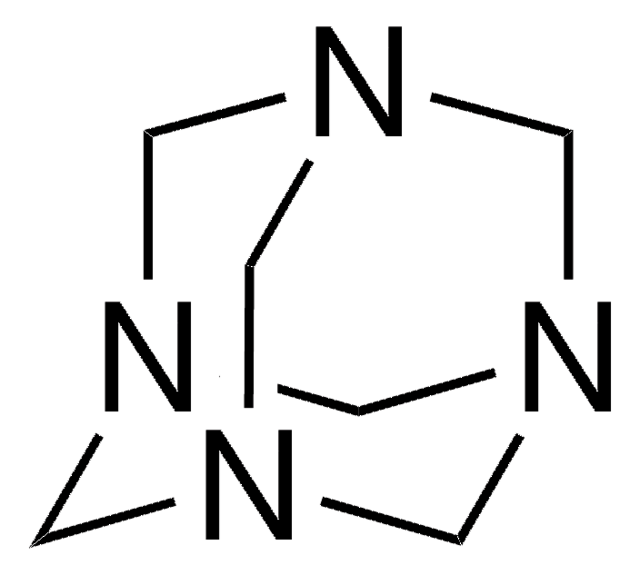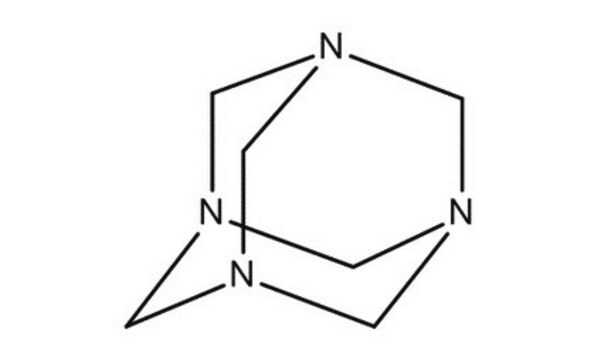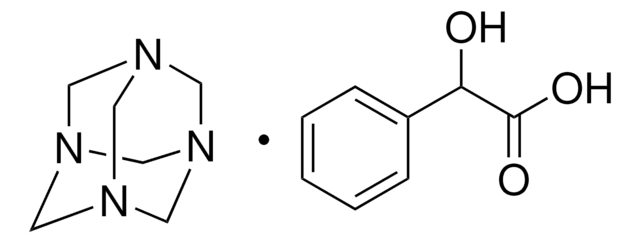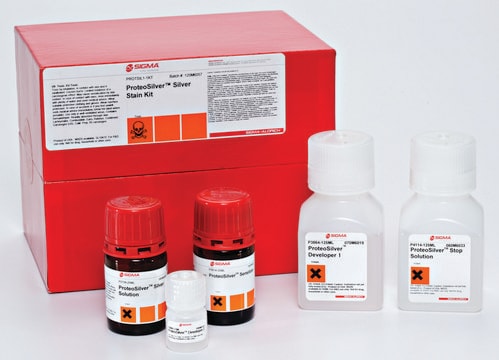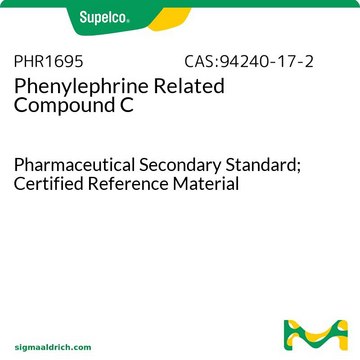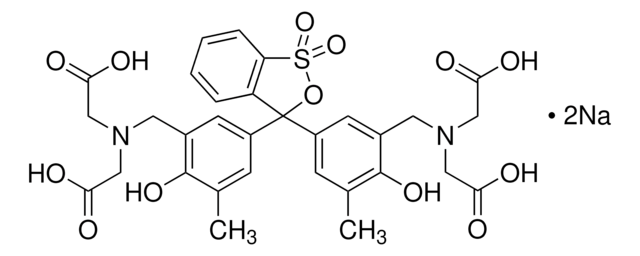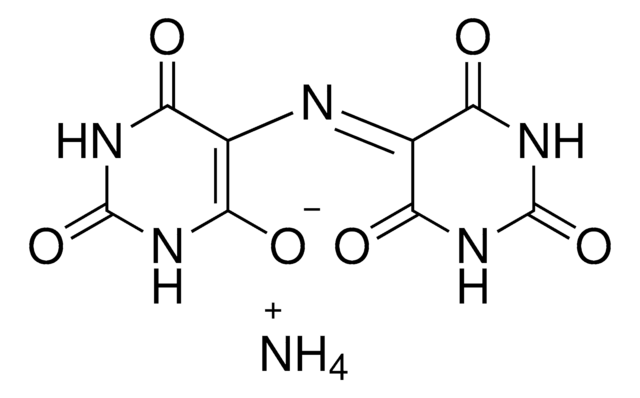Y0000754
Methenamine
European Pharmacopoeia (EP) Reference Standard
Sinónimos:
Hexamethylenetetramine, 1,3,5,7-Tetraazatricyclo[3.3.1.13,7]decane, Hexamine, Methenamine, Urotropine
About This Item
Productos recomendados
grado
pharmaceutical primary standard
presión de vapor
<0.01 mmHg ( 20 °C)
familia API
methenamine
temp. de autoignición
770 °F
fabricante / nombre comercial
EDQM
mp
280 °C (subl.) (lit.)
aplicaciones
pharmaceutical (small molecule)
formato
neat
temp. de almacenamiento
2-8°C
cadena SMILES
C1N2CN3CN1CN(C2)C3
InChI
1S/C6H12N4/c1-7-2-9-4-8(1)5-10(3-7)6-9/h1-6H2
Clave InChI
VKYKSIONXSXAKP-UHFFFAOYSA-N
¿Está buscando productos similares? Visita Guía de comparación de productos
Descripción general
Aplicación
Envase
Otras notas
Producto relacionado
Palabra de señalización
Warning
Frases de peligro
Consejos de prudencia
Clasificaciones de peligro
Flam. Sol. 2 - Skin Sens. 1B
Código de clase de almacenamiento
4.1B - Flammable solid hazardous materials
Clase de riesgo para el agua (WGK)
WGK 1
Punto de inflamabilidad (°F)
482.0 °F - closed cup
Punto de inflamabilidad (°C)
250 °C - closed cup
Elija entre una de las versiones más recientes:
Certificados de análisis (COA)
Lo sentimos, en este momento no disponemos de COAs para este producto en línea.
Si necesita más asistencia, póngase en contacto con Atención al cliente
¿Ya tiene este producto?
Encuentre la documentación para los productos que ha comprado recientemente en la Biblioteca de documentos.
Los clientes también vieron
Nuestro equipo de científicos tiene experiencia en todas las áreas de investigación: Ciencias de la vida, Ciencia de los materiales, Síntesis química, Cromatografía, Analítica y muchas otras.
Póngase en contacto con el Servicio técnico